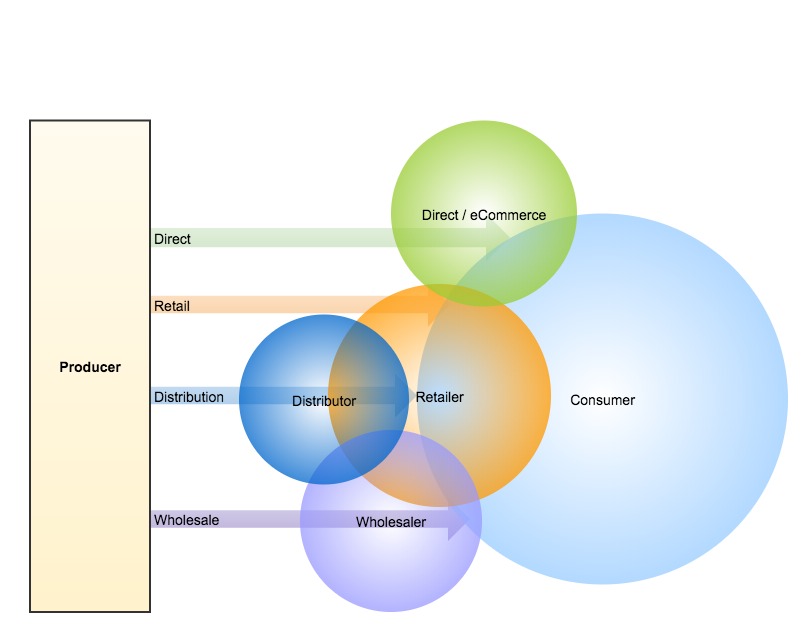Difficulties in withstanding the competition
The rise of newer technology has made the sale of goods available across a plethora of modes. Sellers are not restricted by traditional selling platforms to make sales; online selling has grown tremendously over the last few years. With many players testing the scope of online selling, ability to withstand competition started to become a difficulty within a short span of time. Sellers had to fight for their survival in this harsh environment due to the following reasons
1. Rapidly growing sellers count
Since the need for physical stores and the cost involved in setting up an online shop is negligible, the number of sellers opting for online store has risen. With increasing competition, sellers find it extremely difficult to maintain a strong foothold in the market. In the vast pool of sellers, failure to adapt can lead to immediate extinction making that channel void.
2. Competitive pricing
Large players enter the market with a low profit margin to capture more significant market share. Owing to this nature of the business, these players slashed the prices. Competitive pricing forced other small players to cut their profit margin to fit the demands of the newer markets. As a result, many sellers incur loss or to break even due to cut-throat profit margin.
3. Increase in marketing cost
As the market expanded for online players, the need to promote the online store increased. With the target group growing, higher marketing cost started to affect the overall profit earnings of online sellers. It also became evident that without marketing, online stores will not be able to survive this ever-growing market.
Need of data analysts to introspect
Hence, to understand which channels of sales work for the company, marketers and data analysts must introspect the different mediums handled by the organization. Since each channel is different, it suffices to say that one or more channels might not work in favor of the company; i.e., the brand might be spending more on a channel that is bringing less revenue and visa-a-versa. As an effort to understand this concept, it is necessary to understand and calculate channel profitability. 
Sales channel KPIs to monitor
Every channel’s performance is based on channel effectiveness, channel productivity, channel efficiency, and channel profitability. Channel profitability is one of the primary components that is used for the measure of channel performance. It is based entirely on the financial performance of the channel members. Channel profitability is the rate of a measure calculated regarding Return on Investment(ROI), liquidity, leverage, sales growth, etc. To rate the profitability of a channel, one must factor in different costs of the company. These expenses are investments made by the brand into the channel and the difference between the cost and revenue determines the exact rate of profitability.
Cost consideration
Some of the costs that need to be considered while calculating channel profitability include
1. Direct costs for every order
While determining the profitability of each channel, one has looked at the number of orders received and the cost involved to process the order. Every order consists of a cost for equipment, handling, shipping, and packaging. Ascertaining these charges in an integral part of channel profitability calculation. Determining the cost of every order provides enough proof to discover the expensiveness of the channel.
2. Subsidy expenses for shipping
Offering free shipping has become a mandate for online sellers. These subsidies cost the merchant and thus affects the overall profitability of the channel. Some of the other expenses involved in shipping include packaging costs, warehousing expenses, etc. To ascertain the exact channel profitability, one must consider all the subsidy costs involved in making a sale.
3. Cost of return
Although the probability of returns differs from market to market and the percentage of returns is assuming to be minimal, one must factor in the cost on returns to define a channel’s profitability. Analysing the rate of return is important to derive the average order profit. Higher return rate implies higher average costs. Hence, it is always advised to factor in all the parameters that are part of determining the costs involved in a channel.
Costing method
To derive the channel profitability, marketers use one of the three different costing methods. Some of the techniques that allow marketers to determine the distribution channel profitability are
1. Standard costing method
Primarily, two cost pools are used for this method - product costs, and selling, general and administrative costs (SG&A). Based on the net revenue of each channel, SG&A is allocated. This method of determining channel profitability is used by organizations that are aligned with customer or channel groups.
2. Activity-based costing (ABC)
Considered to be an accurate method of acquiring product costs, ABC works under the assumption that all costs incurred are product driven. While every cost can be split into customer costs, channel costs, this method is particularly beneficial for companies that have high production costs.
3. Strategic Cost Management (SCM)
This method divides the costs into three broad types - product-related costs, channel-related costs, and customer-related costs. With this method, marketers can create a list of the cost involved in a channel including distributor costs, e-commerce expenditure, etc. Since the technique categorises the cost based on its origin, it is easy to use this data to strategize the usability of every channel the company has based on the expenditure incurred. Based on the market and the industry, channel profitability should be calculated for a better understanding of each channel. With the ability to project for the future, the cost of these channels can help the organization take a call on various sales decisions including the need for the online or offline store, vendor deals, etc.


